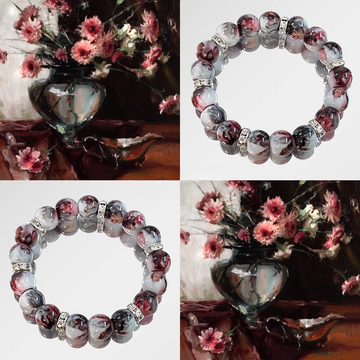Creating and Maintaining a Care Record for Stone Bracelets
Documenting the maintenance history of stone bracelets is essential for tracking their condition, identifying recurring issues, and ensuring timely care. A well-organized care record helps you make informed decisions about repairs, cleaning schedules, and storage practices. Below are steps to establish a comprehensive archive that preserves the longevity and value of your pieces.
Documenting Initial Details and Identification
Start by recording foundational information to distinguish each bracelet and understand its composition:
- Material and Stone Types: Note the primary stone (e.g., jade, amethyst, lapis lazuli) and any accent materials (e.g., metal clasps, beads). Include details about color variations, patterns, or unique markings.
- Acquisition Date and Source: Record when and where the bracelet was obtained, whether purchased, gifted, or inherited. This context aids in assessing its age and potential wear patterns.
- Physical Attributes: Describe the bracelet’s dimensions, clasp type, and design features (e.g., beaded, cuff, or strand). Highlight any fragile components, such as thin wires or protruding stones, that require special attention.
Tracking Cleaning and Maintenance Activities
Log all care-related tasks to monitor frequency and effectiveness, ensuring consistent upkeep:
- Cleaning Methods and Dates: Note the cleaning solutions used (e.g., mild soap, water, or specialized cleaners) and the frequency of treatments. Include observations about the bracelet’s appearance post-cleaning (e.g., “shine restored” or “residue remains”).
- Repair and Restoration History: Document any professional services, such as restringing, prong tightening, or stone replacement. Include the jeweler’s name, date of service, and a brief description of the issue addressed.
- Storage Adjustments: Record changes to storage methods (e.g., switching to a humidity-controlled box) and their impact on the bracelet’s condition. Note instances of tarnish, scratches, or discoloration that prompted adjustments.
Monitoring Condition and Identifying Patterns
Regularly assess the bracelet’s state to detect early signs of damage or deterioration, enabling proactive care:
- Visual Inspections: Conduct monthly checks for loose stones, frayed threads, or metal discoloration. Jot down observations like “clasp feels stiff” or “bead spacing uneven” to prioritize follow-up actions.
- Wear and Tear Trends: Analyze patterns in damage (e.g., frequent snags on a specific clasp) to adjust usage habits or seek repairs. For example, if a bracelet breaks near the same link twice, note the need for reinforcement.
- Environmental Impact: Track how storage conditions (e.g., exposure to sunlight, humidity) affect the bracelet. If a stone fades after prolonged sun exposure, note the need for UV-protected storage.
Organizing and Accessing Your Records
A structured system ensures your care records are easy to update and reference when needed:
- Digital or Physical Archive: Choose a format that suits your preference—digital notes in a cloud-based app, a dedicated journal, or labeled envelopes for handwritten entries. Ensure the system is secure and backed up.
- Photo Documentation: Supplement written records with photos of the bracelet’s condition before and after maintenance. Highlight specific areas (e.g., a repaired clasp) to provide visual context for future reference.
- Sharing Information: If collaborating with a jeweler or heir, share relevant records to streamline care. For instance, note a bracelet’s history of clasp issues to help a jeweler diagnose recurring problems.
By maintaining a detailed care record, you transform reactive maintenance into a proactive strategy. This archive not only preserves the beauty and durability of your stone bracelets but also deepens your appreciation for their craftsmanship and history. Whether passed down through generations or acquired recently, your documented efforts ensure these pieces endure for years to come.







